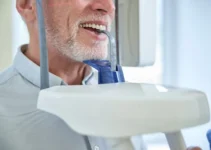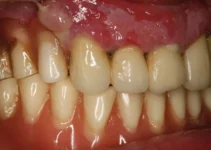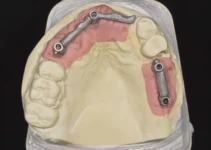OSA surgery, or procedures aimed at treating obstructive sleep apnea, involve various surgical methods designed to eliminate the blockages in the airway that cause sleep disruptions. These surgical solutions range from minimally invasive procedures to more complex surgeries, depending on the severity of the condition and the specific anatomical issues present in each patient. By surgically addressing the factors contributing to airway obstruction, patients can experience significant improvements in sleep quality and overall health. This article explores different surgical options, their potential benefits, and what patients might expect before, during, and after OSA surgery.
Types of OSA Surgery
Obstructive sleep apnea (OSA) is a prevalent condition that can lead to serious health complications if left untreated. While continuous positive airway pressure (CPAP) therapy is often the first line of treatment, surgical options may be necessary for patients who do not respond to or cannot comply with CPAP. Types of OSA surgery have been developed to target different parts of the airway and improve airflow during sleep. Here, we will explore two common types of OSA surgery: Uvulopalatopharyngoplasty (UPPP) and Genioglossus Advancement (GA).
Various surgical procedures offer unique benefits and are tailored to the patient’s specific anatomical issues. Surgical intervention can be a significant step towards improving sleep quality and overall health, and understanding these options is crucial for both patients and healthcare providers. This article will provide insight into two widely accepted surgical procedures for treating OSA: Uvulopalatopharyngoplasty (UPPP) and Genioglossus Advancement (GA).
Uvulopalatopharyngoplasty (UPPP)
Uvulopalatopharyngoplasty (UPPP) is one of the most common surgical treatments for OSA. This procedure involves the removal of the uvula, part of the soft palate, and excess tissue from the pharynx to widen the airway. UPPP aims to reduce airway obstruction by removing or reshaping obstructive tissue at the back of the throat. Patients who have excessive soft tissue in the throat are usually good candidates for this surgery.
Studies have shown that UPPP can significantly reduce the severity of OSA in some patients. However, it is important to note that the success rates can vary. According to a study published in the journal “Sleep,” approximately 50% of patients experience a reduction in apnea-hypopnea index (AHI) scores. Prospective patients should discuss potential outcomes and risks with their surgeon.
Post-operative care following UPPP is crucial for a successful recovery. Patients may experience sore throat, difficulty swallowing, and changes in voice temporarily. It’s important to follow a soft diet and maintain good oral hygiene to foster healing. In some cases, additional treatments may be necessary if UPPP does not fully resolve the symptoms of OSA.
Genioglossus Advancement (GA)
Genioglossus Advancement (GA) is another surgical option designed to treat OSA by addressing tongue base obstruction. The genioglossus muscle is one of the primary muscles that control tongue movement. During GA, a small portion of the lower jaw is repositioned to pull the tongue forward, thereby preventing the tongue from collapsing into the airway during sleep. This procedure is particularly beneficial for patients whose OSA is related to tongue base obstruction.
Research has demonstrated that GA can be effective in reducing OSA severity. According to a study in the “Otolaryngology–Head and Neck Surgery” journal, patients undergoing GA showed a significant reduction in AHI scores. This surgical method is often used in conjunction with other procedures such as UPPP to address multiple sources of airway obstruction.
Recovery from GA typically involves mild to moderate discomfort and swelling. Patients are often advised to follow a soft diet and avoid strenuous activities for a few weeks. Post-operative follow-ups are crucial to monitor healing and assess the effectiveness of the surgery. Adherence to post-operative care and follow-up visits significantly influence the success rate of the surgery.
In summary, both Uvulopalatopharyngoplasty (UPPP) and Genioglossus Advancement (GA) offer viable surgical options for patients struggling with OSA. These procedures target different parts of the airway and can be tailored based on the individual’s specific needs. For further insights into OSA treatments and other related topics, consider exploring additional articles in our series.
Benefits of OSA Surgery
Obstructive Sleep Apnea (OSA) surgery can bring about a host of significant benefits to patients suffering from this condition. One of the most immediate and impactful advantages is the improvement in sleep quality. By removing or reducing obstructions in the airway, surgical interventions help maintain an open airway during sleep, reducing the frequency and severity of apnea episodes. This leads to more restful and uninterrupted sleep, allowing patients to wake up feeling refreshed and rejuvenated.
Furthermore, successful OSA surgery can have a substantial positive effect on a patient’s overall health. Chronic sleep apnea is associated with an increased risk of several serious health issues, including cardiovascular diseases, type 2 diabetes, and hypertension. By addressing the root cause of sleep apnea, surgery can decrease these risks. Patients often experience a reduction in blood pressure and a lower risk of heart disease post-surgery. The benefits also extend to mental health, as improved sleep quality can lead to better mood regulation and a reduction in anxiety and depression symptoms.
In addition to health improvements, there are notable enhancements in the quality of life for patients who undergo OSA surgery. Individuals often report a significant increase in their daytime alertness and cognitive function. Reduced daytime sleepiness means better performance at work or school, more energy for daily activities, and an overall improvement in the ability to concentrate. Moreover, these changes can lead to stronger social interactions and relationships, as the patient is no longer affected by chronic fatigue and irritability associated with poor sleep.
Another advantage worth considering is the potential reduction in the need for continuous positive airway pressure (CPAP) therapy or other medical devices. Many patients find CPAP machines uncomfortable and cumbersome, leading to low adherence rates. Surgery offers a more permanent solution, reducing or even eliminating the reliance on such devices. This not only increases comfort but can also lead to significant cost savings over time, as the need for ongoing equipment maintenance and replacement is diminished.
To discover more about other treatment options and advancements in medical technology, make sure to explore our other informative articles on the subject.
Preparing for OSA Surgery
Undergoing surgery for Obstructive Sleep Apnea (OSA) is a significant step toward improving your overall health and quality of life. Properly preparing for this surgery can make a substantial difference in the outcomes and your comfort during the process. It involves a series of steps and consultations to ensure you’re ready for the procedure both physically and mentally.
In this section, we will delve into the crucial aspects of getting ready for OSA surgery. We’ll discuss the importance of pre-surgery consultations and the necessary medical assessments, as well as lifestyle adjustments that can help improve surgical outcomes. By following these guidelines, you’ll be well-prepared to tackle the procedure with confidence.
The preparation phase is an integral part of the surgical process. It’s not just about being physically ready but also being mentally and emotionally prepared. This holistic approach ensures that you understand the procedure, its risks, and the expected recovery process. Engaging actively in your preparation can significantly enhance the success of the surgery and your overall experience.
Pre-Surgery Consultations
The first step in preparing for OSA surgery is scheduling comprehensive pre-surgery consultations with your healthcare team. These consultations are essential to outline the surgical plan and to discuss any concerns you might have. During these meetings, your surgeon will evaluate your medical history and current health status to ascertain your suitability for the surgery. During the pre-surgery consultations, you can expect to undergo various medical assessments, including physical examinations, blood tests, and imaging studies such as X-rays or CT scans. These tests are designed to provide your surgical team with a clear understanding of your anatomy and any potential complications that could arise during the procedure. Additionally, your surgeon will explain the specific details of the surgery, including the type of procedure being performed, the expected duration, and the recovery timeline. It is crucial to ask questions and voice any concerns during these consultations. Understanding every aspect of your surgery helps alleviate anxiety and ensures you are fully informed about the process.
Moreover, your healthcare provider might recommend lifestyle changes to optimize your health before the surgery. This could include dietary adjustments, starting an exercise regimen, or quitting smoking. These recommendations are aimed at enhancing your physical fitness and reducing the risk of complications during and after the surgery.
Pre-surgery consultations are a fundamental part of the preparation process, making sure you are medically, mentally, and emotionally ready for the journey ahead. By actively participating in these consultations, you take a significant step towards ensuring a successful surgical outcome.
We encourage you to explore other articles on our site to gain more insights into various aspects of OSA and its treatments. There’s always more to learn about managing this condition effectively and improving your quality of life.
Understanding OSA Surgery
If you’re exploring surgery to manage obstructive sleep apnea (OSA), it’s natural to have questions about how it can improve your sleep and overall health.
What is OSA surgery and how does it work?
OSA surgery involves various procedures aimed at removing or reducing obstructions in the airway, which are responsible for sleep apnea. Common surgeries include uvulopalatopharyngoplasty (UPPP), where excess tissue in the throat is removed, and maxillomandibular advancement (MMA), which repositions the jaw to widen the airway. The goal is to enhance air flow during sleep, thereby reducing apnea events.
Who is a good candidate for OSA surgery?
Not every patient with obstructive sleep apnea is a candidate for surgery. Suitable candidates usually are those who have not found relief through CPAP machines or lifestyle changes, have specific physical blockages in the airway, or cannot tolerate other treatments for OSA. A thorough evaluation by a sleep specialist and possibly other medical consultations are required to assess an individual’s suitability for surgical interventions.

My name is Salman Kapa, a 73-year-old expert in bone regeneration and dental implantology. With decades of experience in the field, I am dedicated to advancing our understanding of oral health and hygiene. Through my research and writing, I aim to contribute to the development of innovative solutions in dental care.




